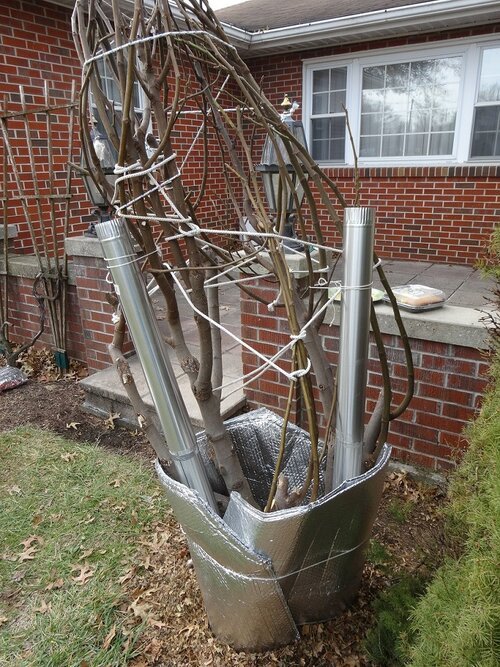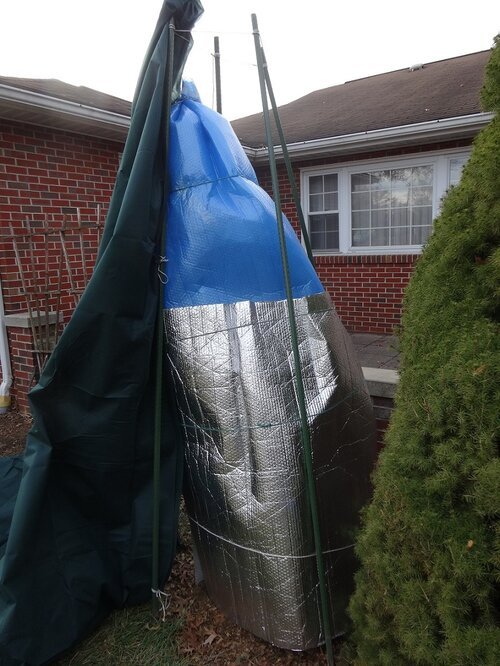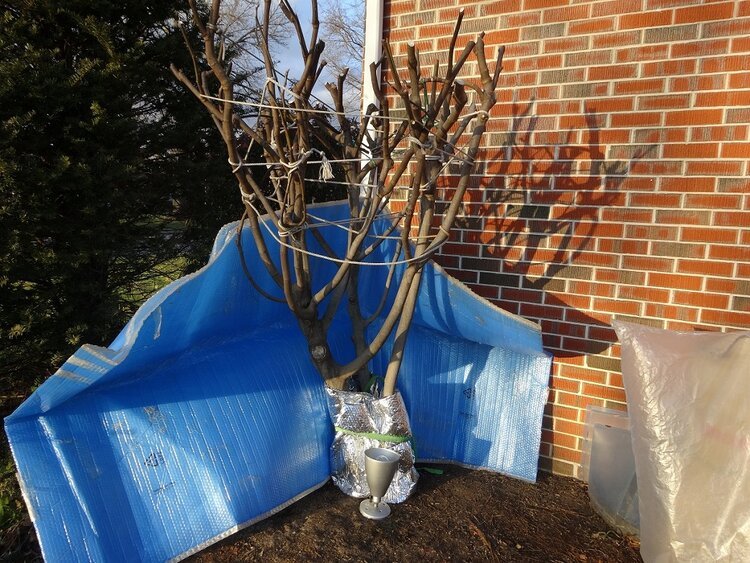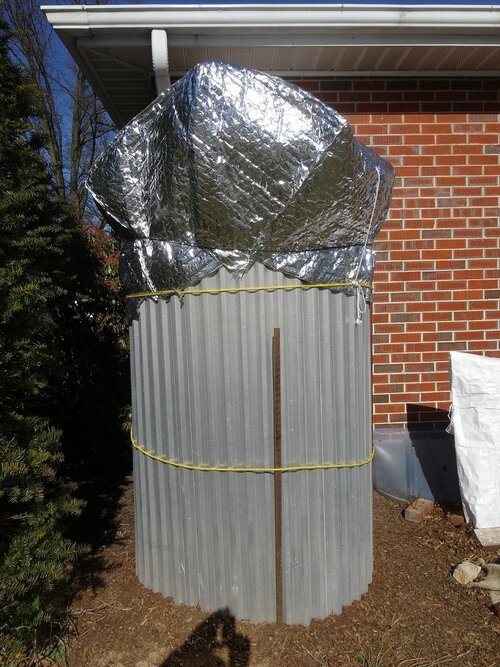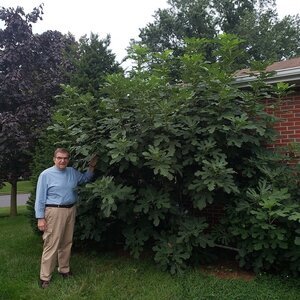By Steven Biggs
Banner Fig Harvest
Will Pananes with a 12-foot-high fig tree in his Pennsylvania garden.
“This year appears to be a banner year, nearly 1,000 figs,” Pananes says as we chat about his creative fig-overwintering technique.
1,000 figs: Not bad for a backyard fig harvest in a zone where figs don’t normally survive the winter. “My growing zone is Pennsylvania 6B,” Pananes notes. (USDA zone 6)
Pananes’ creative heat-tube fig-overwintering method means he has attractive fig trees planted in the landscape around his home—yet he doesn’t need to schlep around potted figs every spring and fall. “I have been using this process successfully for 40 years to ensure my in-ground fig trees don't freeze to the ground, resulting in too short a growing season to ripen figs,” he tells me.
Fig Heat-Tube Method Explained
Pananes has in-ground fig trees incorporated in his landscape.
At the heart of Pananes’ fig-overwintering method is using an incandescent light bulb, which emits heat. When I was first in touch with him a few years back, he told me that the first time he used a light bulb, it burnt a hole in the burlap protection around his fig tree.
To prevent burning, he started to enclose the light bulb in a metal tube. (See photos below.)
Here is the process, explained in Pananes’ words:
The most important component of my winterizing fig tree process is the heat tube.
I started out with a single exposed light bulb. But when I discovered a burnt hole in the burlap-wrapped tree, I decided that the light bulb needed encased in a metal tube.
This metal tube is two three-inch hot water exhaust pipes, each 24-inches long with a 60-watt incandescent rough-service bulb mounted in the centre for easy access. This makes a four-foot heat tube, which will suffice for most trees.
I plug the heat in when temperatures get down to 15°F (-9°C) and turn off when temps exceed 15°F (-9°C).
A light socket with a metal mounting is attached to the exhaust pipe.
Near the bottom of the tube is a fibre optic cable, which extends outside the tree wrap, and confirms that your light bulb is producing heat.
Another test to ensure your bulb is operating is to do a continuity test across the prongs of the electric plug. An "open" indicates a bad bulb. You don't want to go to all this trouble only to freeze your tree because of no heat.
The Fig-Overwintering Heat Tube
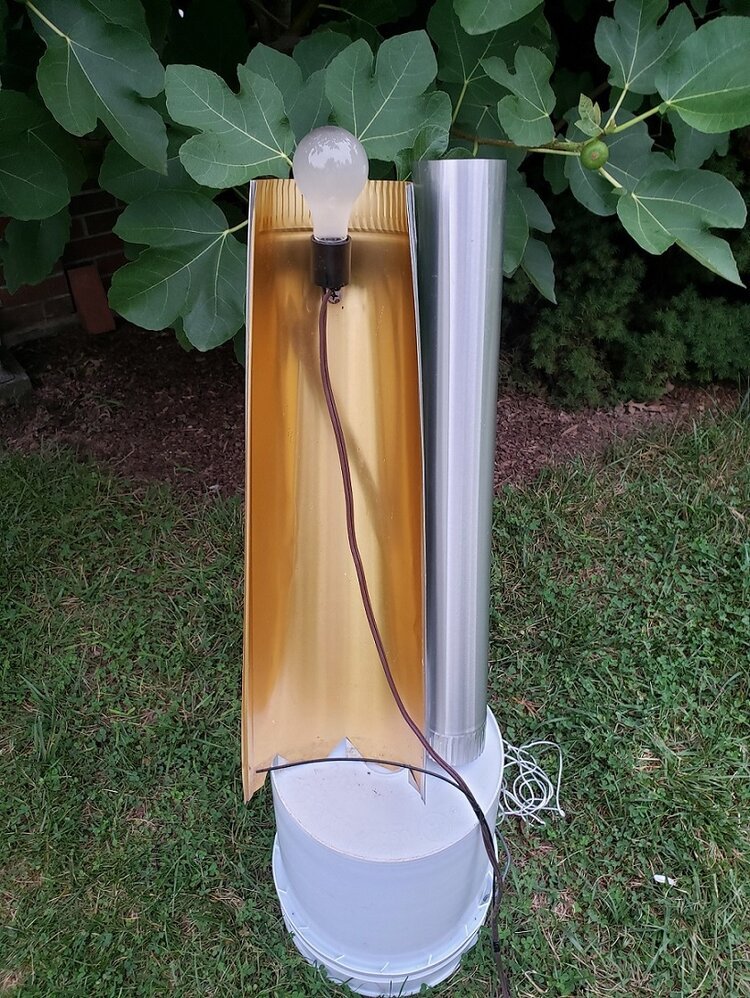

Overwintering Smaller Fig Trees
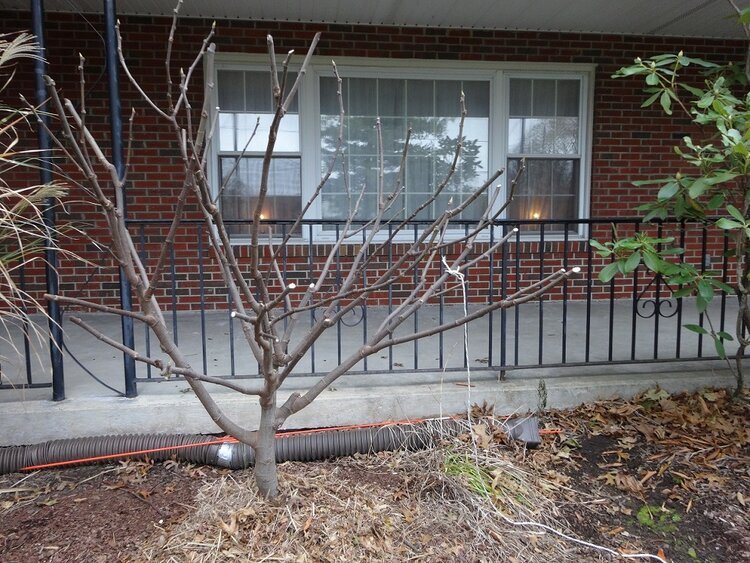
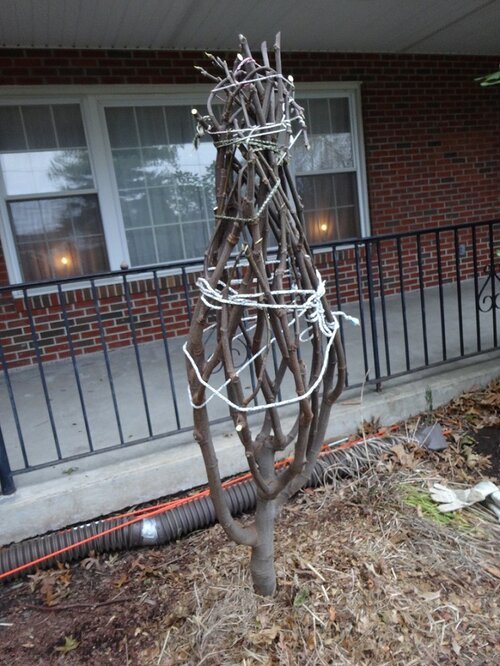
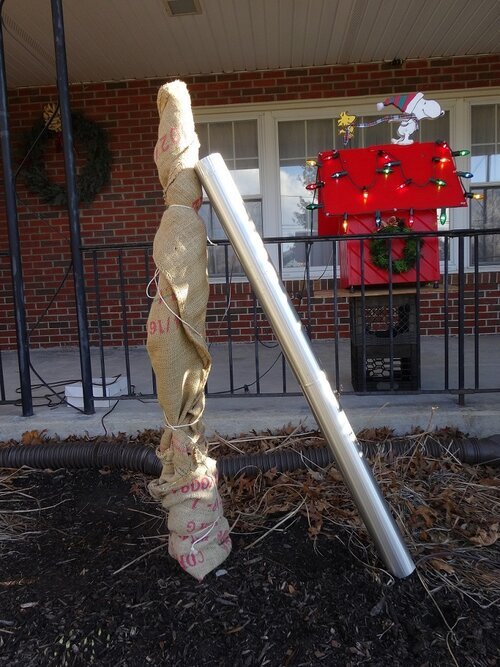
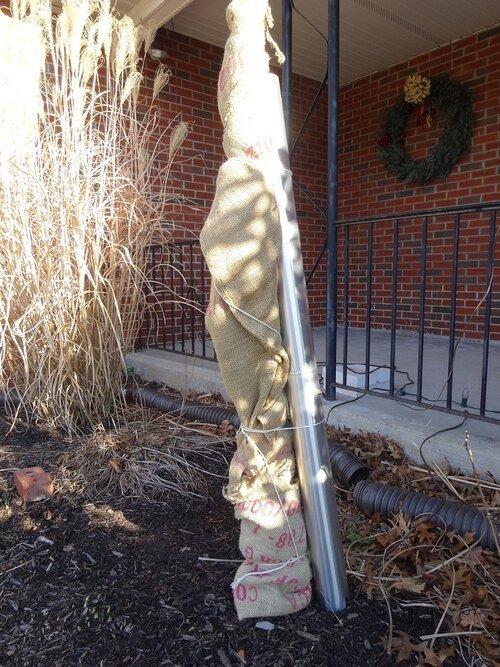
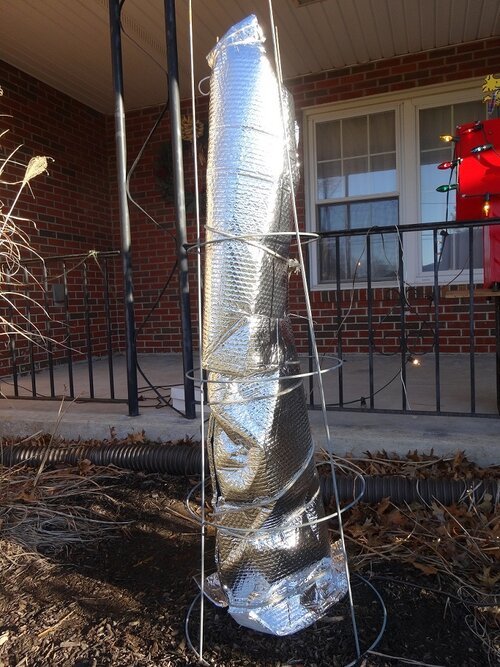

Overwintering Larger Fig Trees
